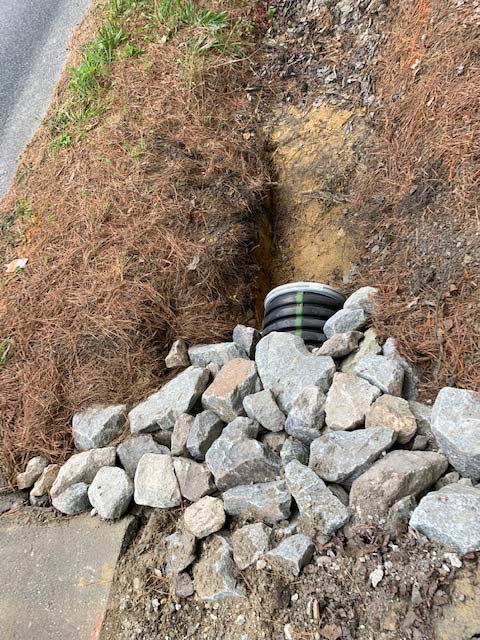Culvert Installation Made Easy: Step-by-Step Guide for Success
Mounting culverts may appear like a straightforward job, yet ensuring a successful end result calls for careful planning and implementation. From choosing the proper culvert size to integrating proper drain steps, each action in the installation process plays a crucial role in the capability and longevity of the culvert system. By adhering to a systematic technique and focusing on essential details, the setup can proceed efficiently, lessening prospective concerns down the line. Remain tuned to uncover the vital steps and factors to consider that can make culvert installment a smooth and successful venture.
Choosing the Right Culvert Dimension
Selecting the proper culvert size is essential for making sure efficient water circulation and architectural honesty in culvert installation tasks - Pad Construction. The dimension of the culvert straight impacts the circulation capacity of water via the structure. A culvert that is also tiny can lead to flooding and overflow, while one that is also large might lead to lowered water velocity, possibly causing debris build-up and clogs
To figure out the right culvert dimension, factors such as the watershed location, top flow prices, and hydraulic efficiency requirement to be carefully considered. Calculations based upon these criteria help in choosing a size that can effectively handle the anticipated water quantity while reducing the threat of clogs and structural failure.
It is important to speak with design standards and requirements to make sure that the picked culvert size meets the project requirements and local guidelines (Pad Construction). By picking the appropriate culvert dimension, task managers can enhance water circulation, protect against possible concerns, and enhance the overall effectiveness and durability of the culvert installation
Preparing the Installment Website
Reliable culvert installation necessitates thorough preparation of the setup site to guarantee ideal structural support and performance. Prior to beginning the setup process, it is essential to get rid of the website of any type of debris, greenery, or blockages that could hinder the culvert's placement. Guaranteeing a level structure is necessary for the proper alignment and security of the culvert. This might include rating the website to develop a smooth, also surface that can sufficiently support the weight of the culvert and any type of awaited tons. Furthermore, proper compaction of the soil below the culvert is needed to stop clearing up or shifting over time.
Moreover, it is very important to think about aspects such as dirt make-up, groundwater degrees, and ecological influences when preparing the installation site. Carrying out a thorough website analysis can aid identify any potential obstacles or threats that might affect the culvert's performance. By taking the time to prepare the setup site correctly, you can help guarantee a successful culvert installation that fulfills structural demands and makes sure lasting capability.
Positioning the Culvert Properly

The quality at which the culvert is positioned is critical for keeping a proper slope for water circulation. A steady incline assists stop merging and promotes effective water drainage. Furthermore, the culvert ought to be oriented properly to make sure that the inlet and outlet are in the proper areas. This alignment is crucial for the culvert to operate properly in taking care of water flow. click now
Backfilling and Condensing the Dirt
Correct backfilling and compaction of the soil around the culvert is necessary to ensure stability and stop potential problems in the future. Once the culvert is properly put, the next crucial step is to backfill the location around it with suitable material.
Compaction assists in decreasing the opportunities of negotiation and ensures uniform assistance around the culvert. It is essential to portable the soil evenly on all sides of the culvert to maintain its architectural stability.
Appropriate backfilling and compaction not just give security to the culvert but also aid in stopping dirt disintegration and keeping the long life of the culvert system.
Making Certain Correct Drainage Combination
Incorporating efficient drain options plays a see crucial role in the general capability and longevity of culvert installments. Correct water drainage assimilation is vital for managing water flow, preventing disintegration, and making certain the architectural stability of the culvert system. To achieve this, it is crucial to develop an extensive drainage strategy that takes into consideration aspects such as the quantity of water anticipated, the topography of the area, and the kind of dirt present.

Additionally, integrating functions like disintegration control steps, such as riprap or vegetation, can even more improve the efficiency of the drain system. By very carefully intending and applying these drain solutions, culvert installations can work effectively and stand up to the test of time.
Final Thought
Finally, correct culvert installment is crucial for maintaining reliable water drainage systems. By picking the best culvert dimension, preparing the installment site, Visit Website placing the culvert correctly, backfilling and condensing the dirt, and making sure appropriate water drainage assimilation, success can be accomplished. Complying with these steps will certainly help ensure the longevity and efficiency of the culvert, ultimately contributing to the total success of the drain system.